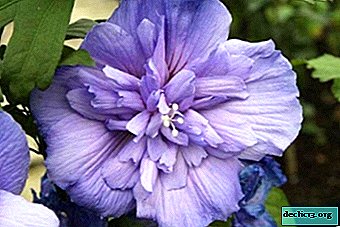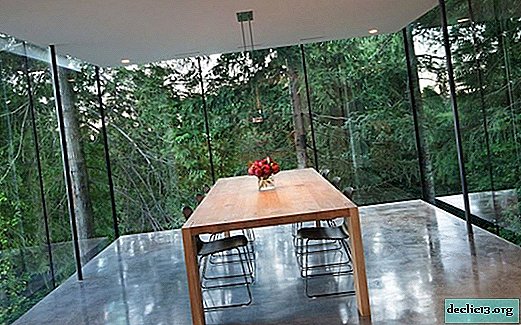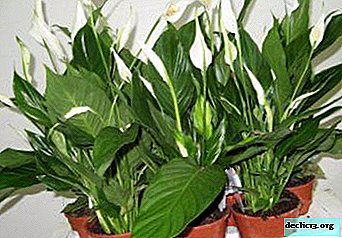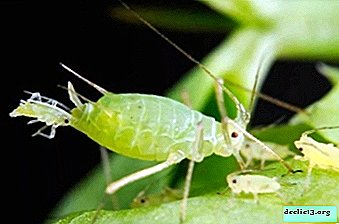A frequent inhabitant of the houses is Sansevieria Laurenti. How to properly care for a flower?

This plant has been familiar to many since childhood, for the reason that it is a frequent inhabitant of houses and apartments, and recently it can often be seen in offices and medical facilities.
We are talking about a plant that has not only an attractive appearance, but also a beautiful, sonorous name - Sansevieria Laurenti.
In the article, we will consider the description of the plant, and also learn how to properly care for the flower.
Botanical Description
Sansevieria Laurentii (Latin: Sansevieria laurentii) has such unofficial (popular) names as the Spear of Africa, Mother-in-law Tongue, Sword, Variegated Snake, plant of Fortune, plant Serpent, Mother tongue Devil's tongue, Laurentii Serpent, Goldband Sansevieria. All these names come from the appearance of its leaves - they are deep green in color with pronounced yellow stripes.
The history of the discovery of this succulent is not entirely clear. The generally accepted fact is that the first mention of sansevieria laurenti is found in botanical records of the distant 17th century. Sansevieria is endemic to Africa, Indonesia and India.Belonging to the agave family, this the plant has hard leaves shaped like double-edged swords . The color of the leaves is dark green with yellow stripes along the edges (and often in the middle). The leaves are basal, upright, 5-6 centimeters wide and can reach a length of 70-95 centimeters. The stem is absent.
Photo
Further on the photo you can see how the flower looks.





Home Care
Sansevieria is a very unpretentious plant and care for it does not require any titanic efforts or fabulous costs. He is not afraid of either low light or scanty or rather rare watering. However, first things first.
- Temperature. Sansevieria does not tolerate cold, so the best option for its placement is a fairly warm room with a temperature that does not fall below +10 degrees. The optimal temperature regime for this plant is + 20 + 30 degrees. With such warmth, sansevieria feels most comfortable and grows most actively, delighting its owners with powerful and dense vegetation.
- Watering. Sansevieria is a drought-tolerant plant, therefore, a closed room with central heating (and therefore rather dry air) is not a hindrance to it and it will perfectly develop in such conditions. During the elapsed time between irrigation, the soil in which the succulent planted should dry completely. In winter, watering should be done once a month or when the soil in the pot becomes dry to the touch.
It is permissible to water the plants during the growing season no more than once every 14 days.
When watering, you must try to prevent water from entering the leaves, as this can cause them to rot. Pouring sansevieria is also unacceptable, since in this case the plant also begins to rot and may die. The biggest danger is acidification of the substrate.
This problem is especially relevant during the wintering period. It is necessary to vigilantly ensure that the soil is completely dry. The first sign of such an excessive bay is yellowed leaves (especially if yellowing began from the basal part of the leaves). Other troubles associated with watering the plant are not observed.
 Shine. Sansevieria is characterized by increased resistance to light of a wide spectrum - from high to low levels of lighting. But the best condition for growing this flower is partial shade.
Shine. Sansevieria is characterized by increased resistance to light of a wide spectrum - from high to low levels of lighting. But the best condition for growing this flower is partial shade.- Priming. When growing this indoor plant, care should be taken to ensure that the soil in the pots in which the sansevieria is planted is as close as possible to the one in which the flower grows in nature.
To do this, you need to make a substrate of the following components:
- Sod land - 1 part.
- Deciduous land - 2 parts.
- Humus - 1 part.
- Sand - 1 part.
- Peat - 1 part.
This composition is as close as possible to the natural soil in which sansevieria grows, which allows you to achieve the most active and healthy flower growth. It is allowed to use a ready-made purchased substrate for succulents, but then there is no guarantee that the plant will actively grow from the first months of planting.
- Pruning. The shape of the sansevieria bush is such that pruning is almost never required for this plant. The exception is those cases when the leaves are affected by any pest or rot occurred as a result of excessively heavy watering.
The cropping process includes only 2 steps:
- With a sharpened knife or blade, it is necessary to cut off the affected part, trying to make the cut as even as possible.
- The resulting section must be treated with any existing antiseptic.
- Top dressing. The recommended option is a slightly concentrated fertilizer for cacti containing calcium or phosphorus compounds. The presence of such compounds will contribute to the successful development of sansevieria. As for nitrogen-containing mixtures, then they should be completely abandoned. Too much fertilizer of the soil can cause a loss of decorative leaves, provoke their uniformity, or lead to the death of the plant.
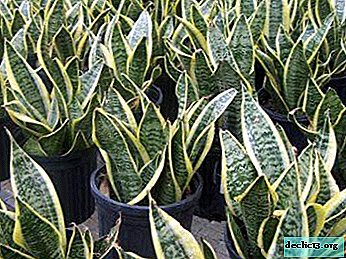 Pot. Since sansevieria has a root system that is actively growing sideways, for its successful cultivation, it is necessary to select a not too deep, but rather wide pot. The roots of this flower are powerful, so it is better to take the pot thick-walled and made of ceramic material.
Pot. Since sansevieria has a root system that is actively growing sideways, for its successful cultivation, it is necessary to select a not too deep, but rather wide pot. The roots of this flower are powerful, so it is better to take the pot thick-walled and made of ceramic material.- Transfer. It is better to transplant sansevieria at the end of spring or at the very beginning of summer. Due to active growth, this must be done once every 2-3 years.
The transplant is performed in the following way:
- Carefully remove the plant from the old pot, slowly freeing the roots from the old earthen coma.
- Check for damage or decay of the roots. If any, damaged or decayed parts must be carefully removed.
- A third of the new pot should be filled with expanded clay drainage, sprinkled on top with a small layer of soil.
- Set the flower in the prepared pot, spreading the roots evenly. Sprinkle the roots with soil, slightly compacting it.
After transplanting, the plant needs to be watered.
- Wintering. Sansevieria, like other succulents, needs a period of rest to restore strength and further active growth.
For a successful wintering, the plant must create the following conditions:
- Temperature: + 12 + 15 degrees.
- Lighting: as dim as possible.
- Watering: once a month or less.
- Top dressing: is absent.
Propagation Features
 Sansevieria laurenti propagates without difficulty in two ways:
Sansevieria laurenti propagates without difficulty in two ways:
- Division of the bush. Carefully pull the plant out of the pot and free the roots from the earthen coma. With a sharp knife, gently slice the thick roots in 2-3 parts lengthwise and allow them to dry out a little. Seed the resulting parts in different pots.
- Cuttings of leaves. From the basal area of the bush, cut a leaf 4-6 centimeters long and allow it to fade slightly. Plant the cuttings in a separate pot with prepared soil cut down to a depth of two centimeters. Lightly moisten the soil and place the pot in a place lit by diffused light. The pot must be covered with glass before the first sprouts appear.
Bloom
Sansevieria blooms quite peculiarly. A spiky arrow is ejected from the central part of the bush, along the length of which there are small white flowers. Flowering occurs in March or early April and lasts 13-15 days.
Sansevieria blooms exclusively at night, filling the room with a delicate aroma similar to vanilla.Diseases and Pests
Sansevieria is very hardy and practically not susceptible to diseases and pests. But some of them can still cause trouble to the plant:
- Spider mite.
- Thrips.
- Shield.
The control of these pests consists in periodically wiping the leaves with a cloth dampened in soapy water and processing with specialized agents.
Similar flowers
Sansevieria is a very beautiful plant. But there are some types of flowers that look like her. Here are 5 of these:
- Hyacinth.
- Sansevieria Dunery.
- Sansevieria Fenward Black.
- Sansevieria Grandis.
- Sansevieria Silver Moon.
From the foregoing, it can be seen that Sansevieria Laurenti is an unpretentious and convenient for home growing plant. And with its appearance, it is able to decorate absolutely any room.

 Shine. Sansevieria is characterized by increased resistance to light of a wide spectrum - from high to low levels of lighting. But the best condition for growing this flower is partial shade.
Shine. Sansevieria is characterized by increased resistance to light of a wide spectrum - from high to low levels of lighting. But the best condition for growing this flower is partial shade. Pot. Since sansevieria has a root system that is actively growing sideways, for its successful cultivation, it is necessary to select a not too deep, but rather wide pot. The roots of this flower are powerful, so it is better to take the pot thick-walled and made of ceramic material.
Pot. Since sansevieria has a root system that is actively growing sideways, for its successful cultivation, it is necessary to select a not too deep, but rather wide pot. The roots of this flower are powerful, so it is better to take the pot thick-walled and made of ceramic material.